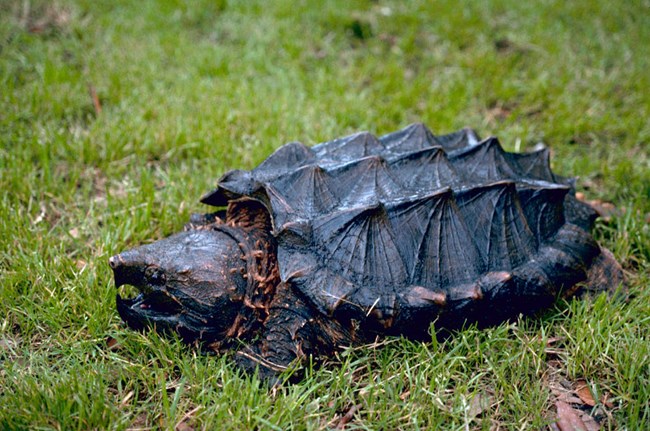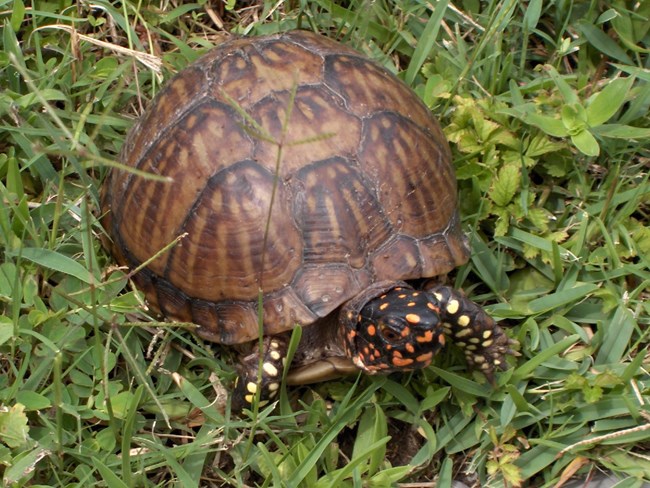|
Our Park Species Lists page has a complete list of turtles and other species found in the Big Thicket. 
Photo: USFWS, Gary Stolz Alligator Snapping TurtleMacrochelys temminckii 
NPS Photo Box TurtlesGenus: Terrapene Allard, H. A. (1935). The natural history of the box turtle. The Scientific Monthly, 41(4), 325-338.
Ligon, D. B., & Lovern, M. B. (2009). Temperature effects during early life stages of the alligator snapping turtle (Macrochelys temminckii). Chelonian Conservation and Biology, 8(1), 74-83. Reed, R. N., Congdon, J., Gibbons, J. W., & Drawer, E. (2002). The Alligator Snapping Turtle. Stickel, L. F. (1950). Populations and home range relationships of the box turtle, Terrapene c. carolina (Linnaeus). Ecological Monographs, 20(4), 351-378. |
Last updated: December 23, 2023
